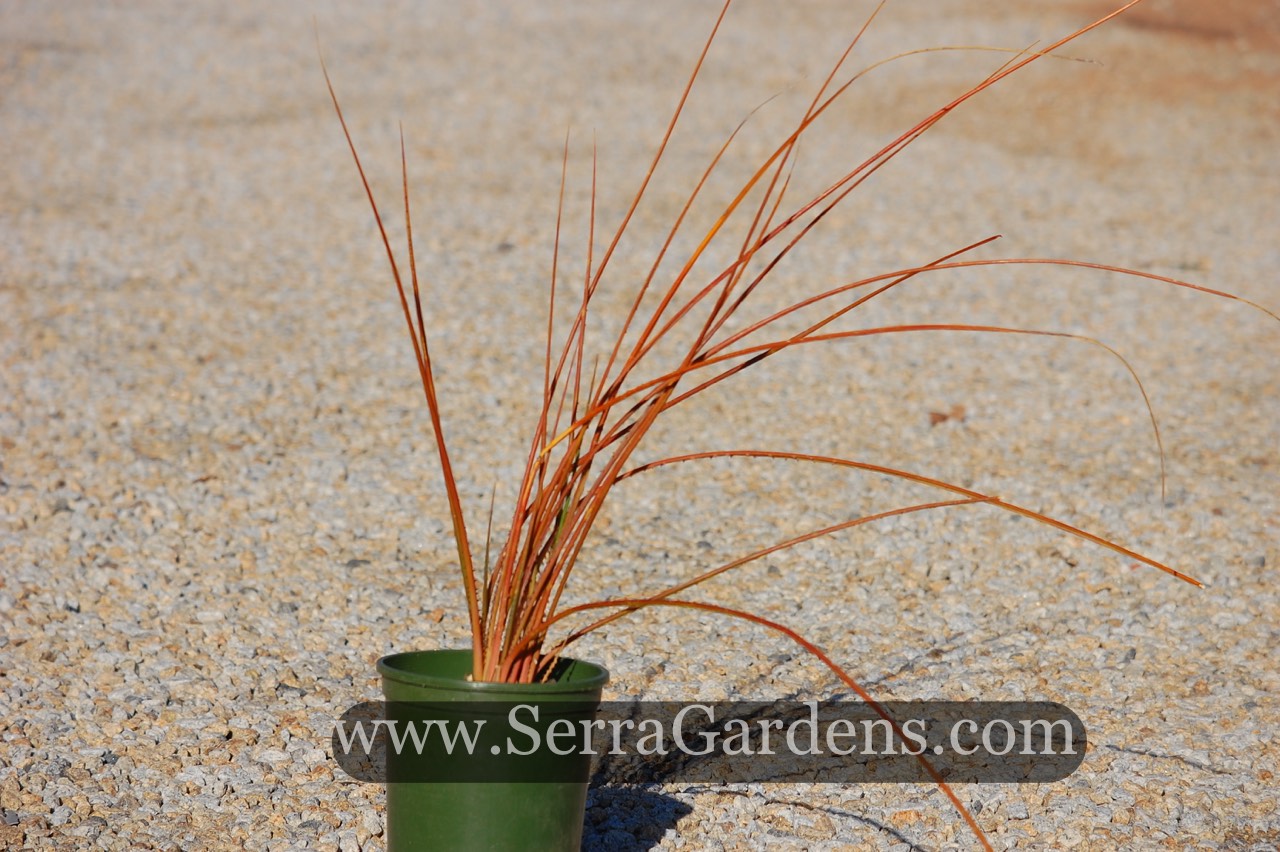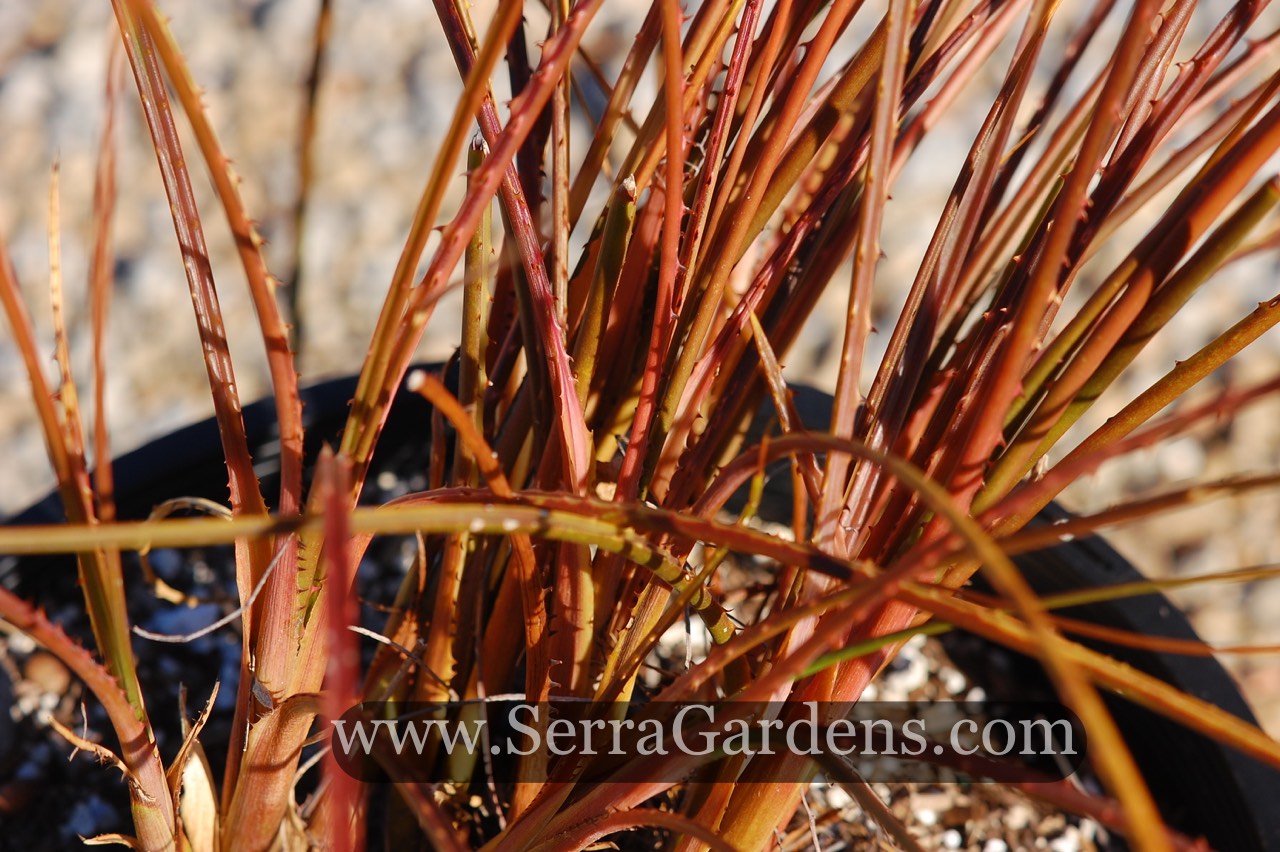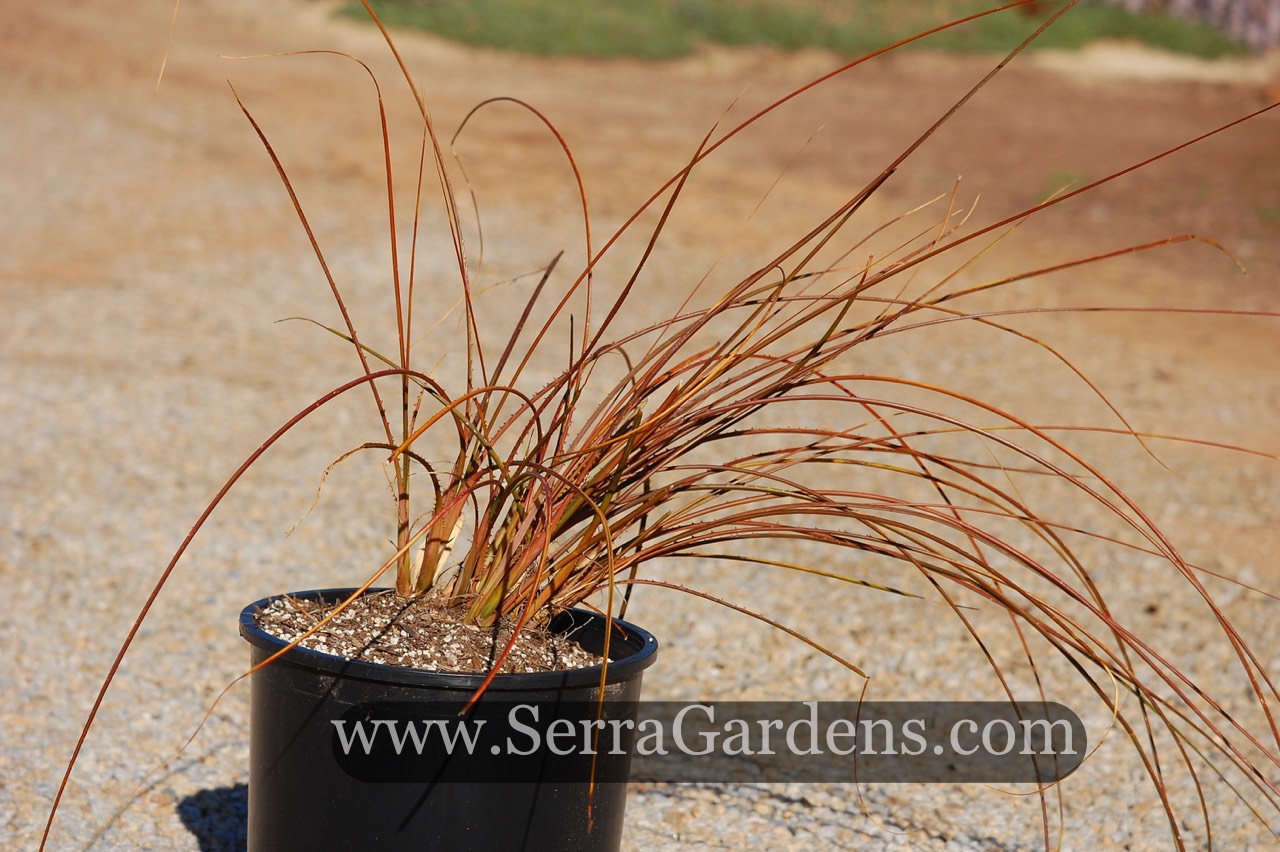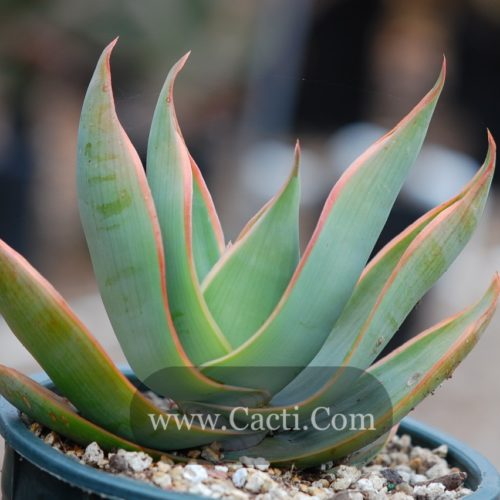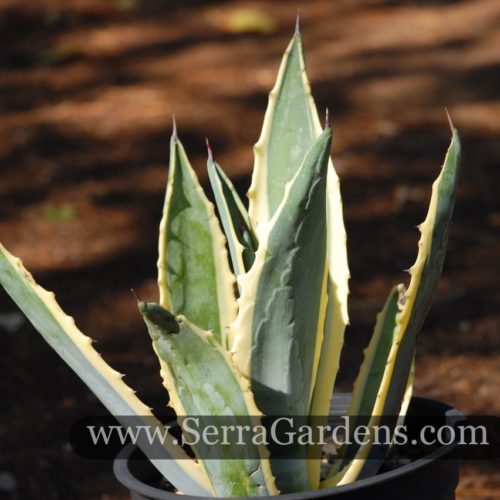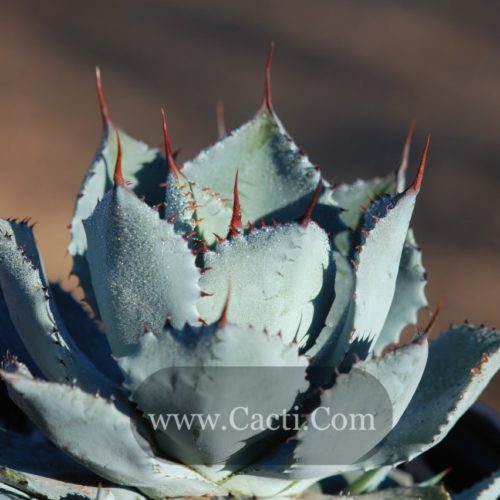Acanthostachys pitcairnioides
Horticultural Information | Shipping & Availability | top
This plant works well in containers and hanging baskets as a curiosity. It can also be grown in well-draining soils in cactus, succulent and rock gardens. In full sun the yellow to orange red foliage foliage will contrast well with silver, green or dark red foliage.
Acanthostachys pitcairnioides can be grown from seed. Mature plants can also be carefully divided to create additional clumps.
This is an interesting and uncommon plant in the bromeliad family; one of just two species in its genus. It requires an easy culture similar to dyckias and can be grown with them and puyas. It has long, slender leaves that are green, yellow, red and orange in color and armed with sharp black teeth/spines. In shade leaves remain more green in color. In summer a mature plant blooms with attractive 3-petaled violet-blue flowers that are nested in the center of the plant and which mature into bulbous white seed capsules. The plant is able to capture condensation with its long inward recurved leaves which channel the moisture to the center of the plant.
In summer a mature plant blooms with attractive 3-petaled violet-blue flowers that are nested in the center of the plant and which mature into bulbous white seed capsules.
The plant is able to capture condensation with its long inward recurved leaves which channel the moisture to the center of the plant.
Horticultural Information
Description | Horticultural Information | Shipping & Availability | Top
Names and Synonyms: Aechmea pitcairnioides
Common Names: None
Family: Bromeliaceae
Origin: Comes from the Espirito Santo region of northeastern Brazil
Size Label: 1 gallon
Height: 2-3′
Width: 1-2′
Cold Tolerance: 25 to 30°F; -3.9 to -1.1°C
Heat Tolerance: High heat tolerance
Light Requirement: Full sun to light shade
Water needs: Very drought tolerant especially in foggy areas along the coast.
Maintenance: Occasionally remove dead foliage
Uses: This plant works well in containers and hanging baskets as a curiosity. It can also be grown in well-draining soils in cactus, succulent and rock gardens. In full sun the yellow to orange red foliage foliage will contrast well with silver, green or dark red foliage.
Propagation: A. pitcairnioides can be grown from seed. Mature plants can also be carefully divided to create additional clumps.
Problems: Tasty for rabbits and requires good drainage.
Research Links:
http://www.desert-tropicals.com/Plants/Bromeliaceae/Acanthostachys_pitcairn.html
http://davesgarden.com/guides/pf/go/64542/
http://bromeliad.org.au/pictures/Acanthostachys/pitcairnioides.htm
Shipping & Availability
Description | Horticultural Information | Shipping & Availability | top
There is a minimum purchase of any 4 plants for online orders. All plants shipped bare root.
Other sizes may be available for pick up from our growing grounds in Fallbrook, CA.
For more information, give us a call at 760-990-4762.
Click here for complete Price List.
